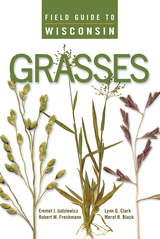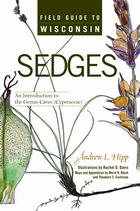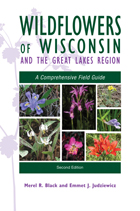3 books about Black, Merel R.

Field Guide to Wisconsin Grasses
Emmet J. Judziewicz , Robert W. Freckmann, Lynn G. Clark, Merel R. Black
University of Wisconsin Press, 2014
Grasses are the foremost plant family of prairies, savannas, barrens, many agricultural landscapes, lawns, and successional habitats throughout Wisconsin, yet they are notoriously difficult to identify. This field guide to 232 species of Wisconsin grasses includes more than 1,100 illustrations. Setting a new standard as the first new, illustrated midwestern grass identification manual to appear since the 1960s, it provides up-to-date, comprehensive information for naturalists, gardeners, landscapers, nursery horticulturalists, community restoration professionals, agronomists and biologists, and any outdoors lover.
The book includes:
The book includes:
• species descriptions and distribution maps for all 232 species
• more than 700 color photographs accompanying species descriptions
• drawings of most species
• chapters on grass morphology and grasses in natural communities
• keys to all species, including an illustrated key to genera
• a glossary of grass terminology.
• drawings of most species
• chapters on grass morphology and grasses in natural communities
• keys to all species, including an illustrated key to genera
• a glossary of grass terminology.
[more]

Field Guide to Wisconsin Sedges
An Introduction to the Genus Carex (Cyperaceae)
Andrew L. Hipp; Illustrations by Rachel D. Davis; Maps and Appendices by Merel R. Black and Theodore S. Cochrane
University of Wisconsin Press, 2008
Sedges are among the world’s most diverse and ecologically important plant families, with almost two hundred species in Wisconsin alone. These grass-like plants, found mostly in wetlands, are increasingly popular with landscapers and home gardeners. Learning to identify sedges is challenging, however, and the available technical guides to the sedge family can be overwhelming to a nonspecialist. Field Guide to Wisconsin Sedges is a beautifully illustrated introduction to the largest sedge genus, Carex, which alone makes up about 7 percent of the flora of the upper Midwest.
Written primarily for naturalists, wild plant enthusiasts, and native landscapers, this book is unique in its accessible format and illustrations. With this book, readers can learn to recognize key structures needed to identify approximately 150 Carex species found in Wisconsin. Author Andrew Hipp shows how to identify many of the major groupings of sedges that are used in guides to the genus throughout the world.
Field Guide to Wisconsin Sedges includes information on habitat and range drawn from Hipp’s extensive field experience and inspection of thousands of herbarium sheets. Primarily an identification guide, the book is also a valuable source of habitat information for landscapers, gardeners, and restorationists.
Features:
• Keys to all Wisconsin Carex species, arranged by section
• Distribution maps for all species
• Species descriptions and detailed habitat information for more than 50 common species
• Color illustrations of whole plants or details for more than 70 species
• Appendix summarizing dominant Carex species by Wisconsin habitat
• A glossary of terms
• Water-resistant paperback cover
[more]

Wildflowers of Wisconsin and the Great Lakes Region
A Comprehensive Field Guide
Merel R. Black and Emmet J. Judziewicz
University of Wisconsin Press, 2009
Describing more than 1,100 species, this is a comprehensive guide to wildflowers in Wisconsin and parts of Minnesota, Michigan, Illinois, Indiana, Iowa, and Ontario. A new introduction to this second edition discusses wildflowers in the context of their natural communities. Packed with detailed information, this field guide is compact enough to be handy for outdoors lovers of all kinds, from novice naturalists to professional botanists. It includes:
• more than 1,100 species from 459 genera in 100 families
• many rare and previously overlooked species
• 2,100 color photographs and 300 drawings
• Wisconsin distribution maps for almost all plants
• brief descriptions including distinguishing characteristics of the species
• Wisconsin status levels for each species of wildflower (native, invasive, endangered, etc.)
• derivation of Latin names.
• more than 1,100 species from 459 genera in 100 families
• many rare and previously overlooked species
• 2,100 color photographs and 300 drawings
• Wisconsin distribution maps for almost all plants
• brief descriptions including distinguishing characteristics of the species
• Wisconsin status levels for each species of wildflower (native, invasive, endangered, etc.)
• derivation of Latin names.
[more]
READERS
Browse our collection.
PUBLISHERS
See BiblioVault's publisher services.
STUDENT SERVICES
Files for college accessibility offices.
UChicago Accessibility Resources
home | accessibility | search | about | contact us
BiblioVault ® 2001 - 2025
The University of Chicago Press









